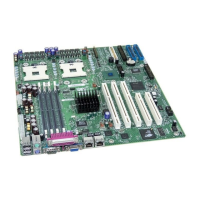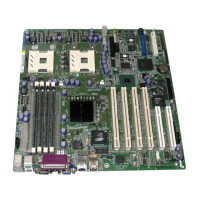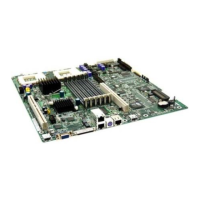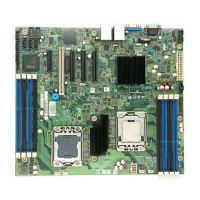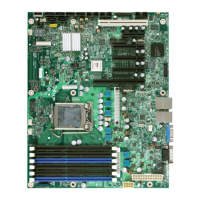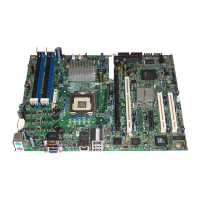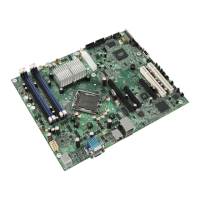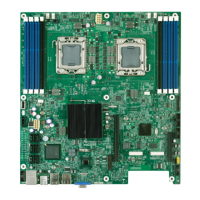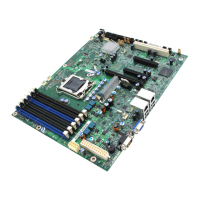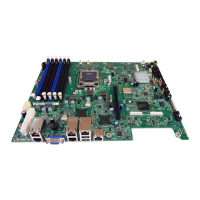Intel® Server Board SE7520BD2 Technical Product Specification BIOS Architecture
Revision 1.3 Intel Confidential
61
3.5.4.1 BIOS Recovery
The BIOS has a ROM image size of 2 MB. A standard 1.44MB floppy diskette cannot hold the
entire ROM file due to the large file size. To compensate for this, a Multi-disk recovery method
is available for BIOS recover (see Section 3.5.4.2 for further details).
The BIOS contains a primary and secondary partition, and can support rolling BIOS updates.
The recovery process performs an update on the secondary partition in the same fashion that
the normal flash update process updates the secondary partition. After recovery is complete
and the power is cycled to the system, the BIOS partitions switch and the code executing POST
will be the code that was just flashed from the recovery media. The BIOS is made up of a boot
block recovery section, a main BIOS section, an OEM logo/user binary section, and an NVRAM
section. The NVRAM section will be preserved during invocation of the recovery. All the other
sections of the secondary BIOS will be updated during the recovery process. If an OEM wishes
to preserve the OEM section across an update, it is recommended that the OEM modify the
provided AMIBOOT.ROM file with the user binary or OEM logo tools before performing the
recovery.
A BIOS recovery can be accomplished from one of the following devices: a standard 1.44 or
2.88 MB floppy drive, an USB Disk-On-Key, an ATAPI CD-ROM/DVD, an ATAPI ZIP drive, or a
LS-120/LS-240 removable drive.
The recovery media must include the BIOS image file, AMIBOOT.ROM.
The recovery mode procedure is as follows:
1. Insert or plug-in the recovery media with the AMIBOOT.ROM file.
2. Power on the system. When progress code E9 is displayed on port 80h, the system will
detect the recovery media (if there is no image file present, the system will cycle through
progress code F1 to EF).
3. When F3 is displayed on port 80h, the system will read the BIOS image file.
4. When recovery mode is complete, the system will halt and the system can be powered
off.
Note: The hot-key combination can be invoked:
• <Ctrl+Home> - Recovery with CMOS destroyed and NVRAM preserved.
3.5.4.2 Multi-disk Recovery
The Multi-disk Recovery method is available to support ROM images greater than 1 MB when
performing a BIOS recovery from multiple floppy disks.
Do the following to perform a multi-disk BIOS recovery:
• Use the SPLIT.EXE utility to split the ROM image.
• Execute the following command at the command prompt:
split <File Name To Be Split> <New File Name> <File Size in KB>
